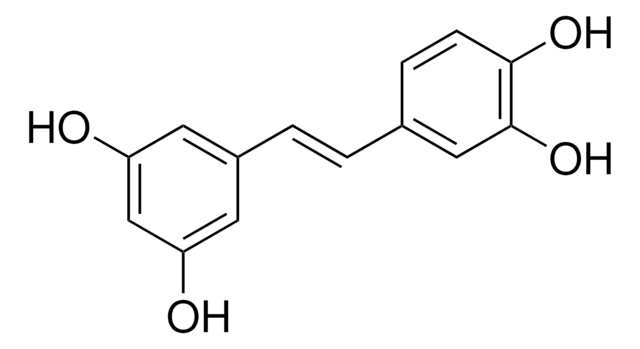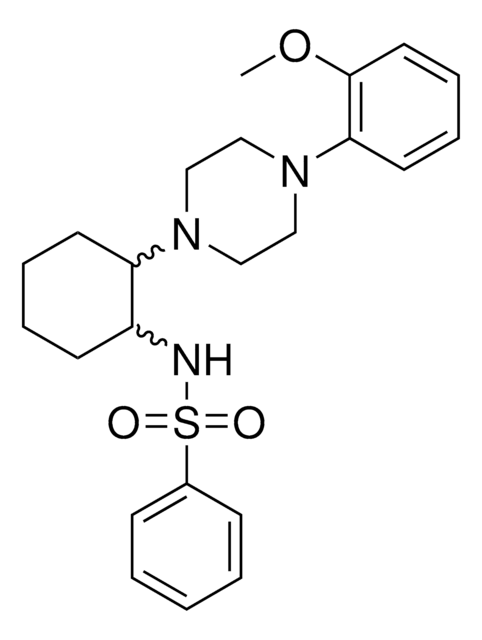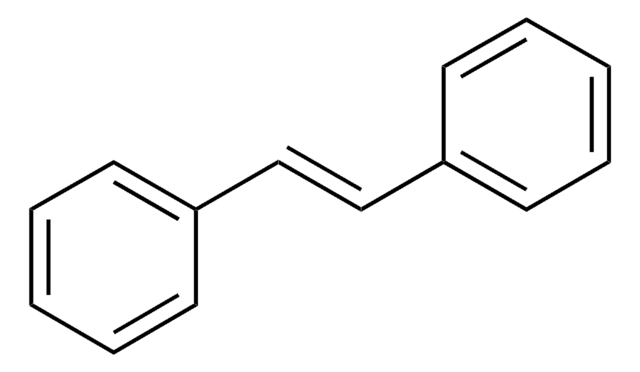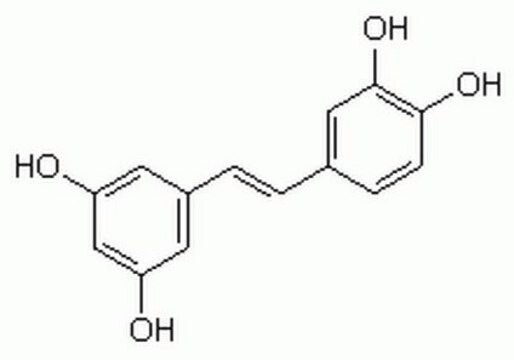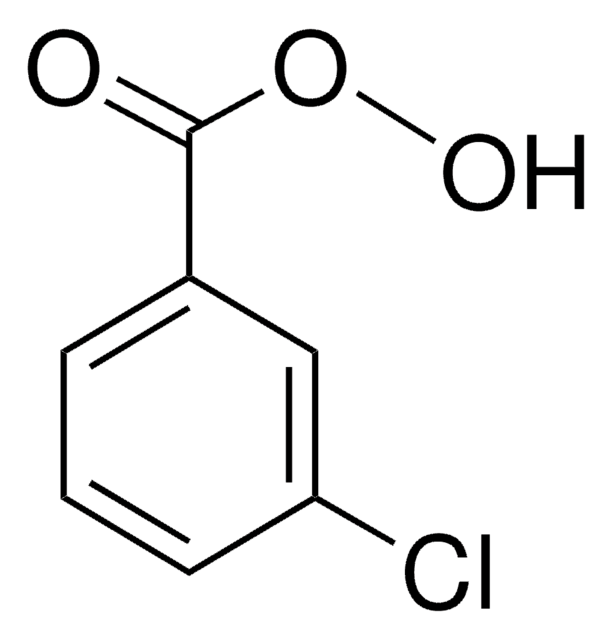おすすめの製品
品質水準
アッセイ
≥98% (HPLC)
フォーム
solution
薬剤管理
regulated under CDSA - not available from Sigma-Aldrich Canada
保管条件
protect from light
under inert gas
濃度
5 mg/mL in absolute ethanol
色
light yellow
保管温度
−20°C
SMILES記法
CC\C=C/C\C=C/C\C=C/C\C=C/C\C=C/CCCC(=O)NCCO
InChI
1S/C22H35NO2/c1-2-3-4-5-6-7-8-9-10-11-12-13-14-15-16-17-18-19-22(25)23-20-21-24/h3-4,6-7,9-10,12-13,15-16,24H,2,5,8,11,14,17-21H2,1H3,(H,23,25)/b4-3-,7-6-,10-9-,13-12-,16-15-
InChI Key
OVKKNJPJQKTXIT-JLNKQSITSA-N
生物化学的/生理学的作用
Eicosapentaenoyl ethanolamide (EPEA) is a lipid mediator that has been found to suppress lifespan extension resulting from dietary restriction in C. elegans and also to have antiproliferative and anti-inflammatory actions. In C. elegans, it is believed to act as a metabolic signal that couples nutrient availability with growth and lifespan. EPEA is a member of the N-acylethanolamines (NAEs), lipid-derived signaling molecules that include the mammalian endocannabinoid arachidonoyl ethanolamide (AEA). In mammals, NAEs are believed to act primarily through cannabinoid receptors, although they can also interact with a variety of other targets, and EPEA has been shown to act as a CB1 and CB2 receptor agonist. However, C. elegans does not possess clear orthologues of the mammalian cannabinoid receptors which suggests that there are unidentified NAE receptors in nematodes that are possibly conserved mediators of NAE signaling.
その他情報
Light and air sensitive; store in a freezer.
保管分類コード
10 - Combustible liquids
WGK
WGK 3
引火点(°F)
Not applicable
引火点(℃)
Not applicable
適用法令
試験研究用途を考慮した関連法令を主に挙げております。化学物質以外については、一部の情報のみ提供しています。 製品を安全かつ合法的に使用することは、使用者の義務です。最新情報により修正される場合があります。WEBの反映には時間を要することがあるため、適宜SDSをご参照ください。
Jan Code
SML0384-5MG:
SML0384-25MG:
SML0384-BULK:
SML0384-VAR:
最新バージョンのいずれかを選択してください:
Mark Lucanic et al.
Nature, 473(7346), 226-229 (2011-05-13)
Dietary restriction is a robust means of extending adult lifespan and postponing age-related disease in many species, including yeast, nematode worms, flies and rodents. Studies of the genetic requirements for lifespan extension by dietary restriction in the nematode Caenorhabditis elegans
Strahil Iv Pastuhov et al.
Nature communications, 3, 1136-1136 (2012-10-18)
The ability of neurons to regenerate their axons after injury is determined by a balance between cellular pathways that promote and those that inhibit regeneration. In Caenorhabditis elegans, axon regeneration is positively regulated by the c-Jun N-terminal kinase mitogen activated
Celina Galles et al.
Scientific reports, 8(1), 6398-6398 (2018-04-25)
Proper cholesterol transport is crucial for the functionality of cells. In C. elegans, certain cholesterol derivatives called dafachronic acids (DAs) govern the entry into diapause. In their absence, worms form a developmentally arrested dauer larva. Thus, cholesterol transport to appropriate
Sylvie Callegari et al.
Journal of molecular biology, 431(15), 2835-2851 (2019-05-20)
Mitochondrial membrane proteins with internal targeting signals are inserted into the inner membrane by the carrier translocase (TIM22 complex). For this, precursors have to be initially directed from the TOM complex in the outer mitochondrial membrane across the intermembrane space
Michiel G J Balvers et al.
Metabolomics : Official journal of the Metabolomic Society, 8(6), 1130-1147 (2012-11-09)
It is well established that dietary intake of n-3 fatty acids is associated with anti-inflammatory effects, and this has been linked to modulation of the oxylipin and endocannabinoid metabolomes. However, the amount of data on specific tissue effects is limited
ライフサイエンス、有機合成、材料科学、クロマトグラフィー、分析など、あらゆる分野の研究に経験のあるメンバーがおります。.
製品に関するお問い合わせはこちら(テクニカルサービス)


